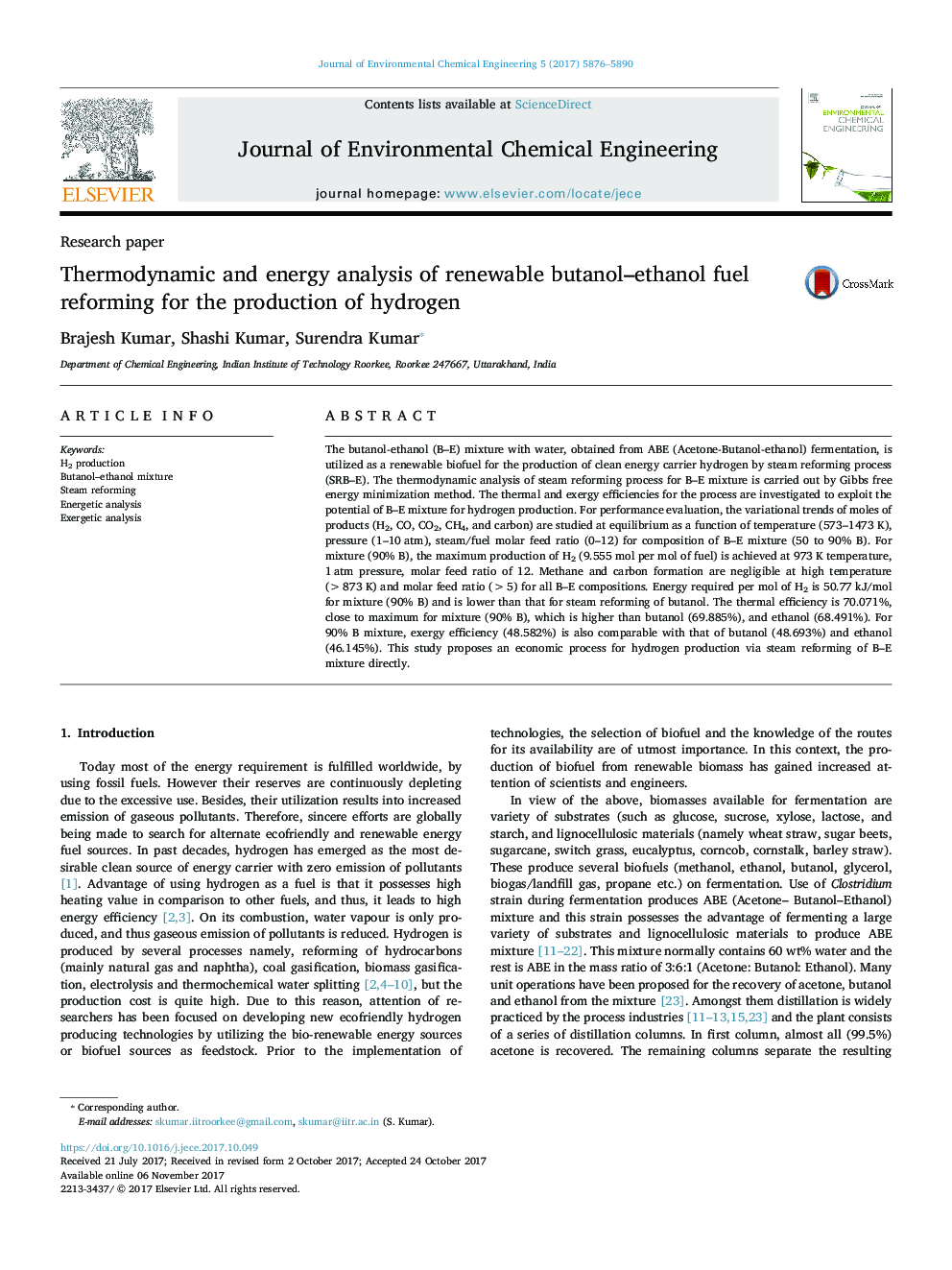| Article ID | Journal | Published Year | Pages | File Type |
|---|---|---|---|---|
| 6664207 | Journal of Environmental Chemical Engineering | 2017 | 15 Pages |
Abstract
The butanol-ethanol (B-E) mixture with water, obtained from ABE (Acetone-Butanol-ethanol) fermentation, is utilized as a renewable biofuel for the production of clean energy carrier hydrogen by steam reforming process (SRB-E). The thermodynamic analysis of steam reforming process for B-E mixture is carried out by Gibbs free energy minimization method. The thermal and exergy efficiencies for the process are investigated to exploit the potential of B-E mixture for hydrogen production. For performance evaluation, the variational trends of moles of products (H2, CO, CO2, CH4, and carbon) are studied at equilibrium as a function of temperature (573-1473Â K), pressure (1-10Â atm), steam/fuel molar feed ratio (0-12) for composition of B-E mixture (50 to 90% B). For mixture (90% B), the maximum production of H2 (9.555Â mol per mol of fuel) is achieved at 973Â K temperature, 1Â atm pressure, molar feed ratio of 12. Methane and carbon formation are negligible at high temperature (>873Â K) and molar feed ratio (>5) for all B-E compositions. Energy required per mol of H2 is 50.77Â kJ/mol for mixture (90% B) and is lower than that for steam reforming of butanol. The thermal efficiency is 70.071%, close to maximum for mixture (90% B), which is higher than butanol (69.885%), and ethanol (68.491%). For 90% B mixture, exergy efficiency (48.582%) is also comparable with that of butanol (48.693%) and ethanol (46.145%). This study proposes an economic process for hydrogen production via steam reforming of B-E mixture directly.
Related Topics
Physical Sciences and Engineering
Chemical Engineering
Chemical Engineering (General)
Authors
Brajesh Kumar, Shashi Kumar, Surendra Kumar,
